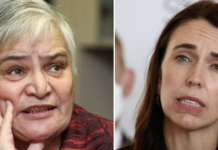Rainbow youth still facing stigma and stress but positive signs: new findings
Youth19, the latest in a series of surveys focused on young people in Aotearoa, asked 7,721 secondary school-aged students about their experiences of school, home and community.
Co-investigator Dr John Fenaughty from the University of Auckland says that around half of the rainbow students in the study are coping well, and a sizeable number report positive environments and experiences.
However some, especially transgender and diverse gender students, are facing stigma and stress.
“The increased amounts of mistreatment and stress, particularly for some transgender and diverse gender young people, are known drivers that underpin the increased rates mental health challenges we are seeing,” says Dr Fenaughty.
Three quarters (73%) of transgender and diverse gender participants, who account for about one percent of the students’ surveyed, said they had started to identify as transgender or gender-diverse before the age of 14.
On all measures, apart from volunteering, a greater proportion of these students reported discrimination and a lack of support than their cisgender peers, including at home, at school and in community and healthcare settings.
More than half (55%) reported they hadn’t been able to access healthcare when they needed it in the past year, with 57% reporting significant depressive symptoms and an equal proportion reporting they had self-harmed in the past year.
While schools are becoming more welcoming, with seven out of ten saying they felt part of their school, nearly a quarter (23%) said they had been bullied at school, weekly or more often, in the past year. Only three out of ten (32%) said they “always felt safe” in their neighbourhoods.
Lower proportions of transgender and diverse gender youth also reported that a parent “cared about them a lot”. Dr Fenaughty says this might be related to families not understanding, or accepting, the young person’s gender.
“This perceived lack of care, combined with a lack of belonging at school for some of these students, means they may be particularly vulnerable to harm.”
However despite facing significant challenges, these students’ generosity in giving back to others, through volunteering and supporting their communities, matches that of cisgender students, he says.
“Such willingness to support others is an important strength to celebrate and nurture, and we need to ensure that rainbow young people are supported to take on these volunteering roles safely, given they are likely to be facing a range of additional stressors.”
Sixteen percent of Youth19 participants reported they were same or multiple-sex attracted, not sure, or not attracted to any sex. The majority of this group reported positive home and family environments, and were no more likely to report weekly bullying compared to different-sex attracted young people.
However, a greater proportion of same and multiple-sex attracted students reported social and school isolation and unsafe environments than their different-sex attracted peers.
Just over half reported significant depressive symptoms (53%), and a similar proportion said they had self-harmed in the past year (50%). Almost one in three (31%) said they were unable to access healthcare when they needed it in the past year.
Dr Fenaughty says adequate health care access is an urgent issue for many rainbow students, especially given the higher rates of mental health challenges that the survey has identified.
And the early age at which some of these students recognised their transgender and gender diverse identities means there is an important opportunity for primary and intermediate schools to turn these statistics around.
“Schools, at all levels, need to have a plan for how they will create rainbow-inclusive environments and attitudes among students and staff,” he says.
Youth19 is the latest in the Aotearoa New Zealand Youth2000 series of health and wellbeing surveys which began in 2001 and has involved more than 36,000 students. The most recent survey involved 7,721 adolescents from 49 Auckland, Northland and Waikato schools and kura kaupapa Māori.
It is being led by Dr Terryann Clark from the University of Auckland and Dr Terry Fleming from Victoria University of Wellington, alongside a number of collaborators.






In this life I have found that if you are different and stand out wether it is sexuality race tall short fat thin you are going to be insulted or demonized in some way. I dealt with it by telling myself it is the protagonist that is a dick and secretly they wanted to be you but were to scared so you are better than them .
Comments are closed.